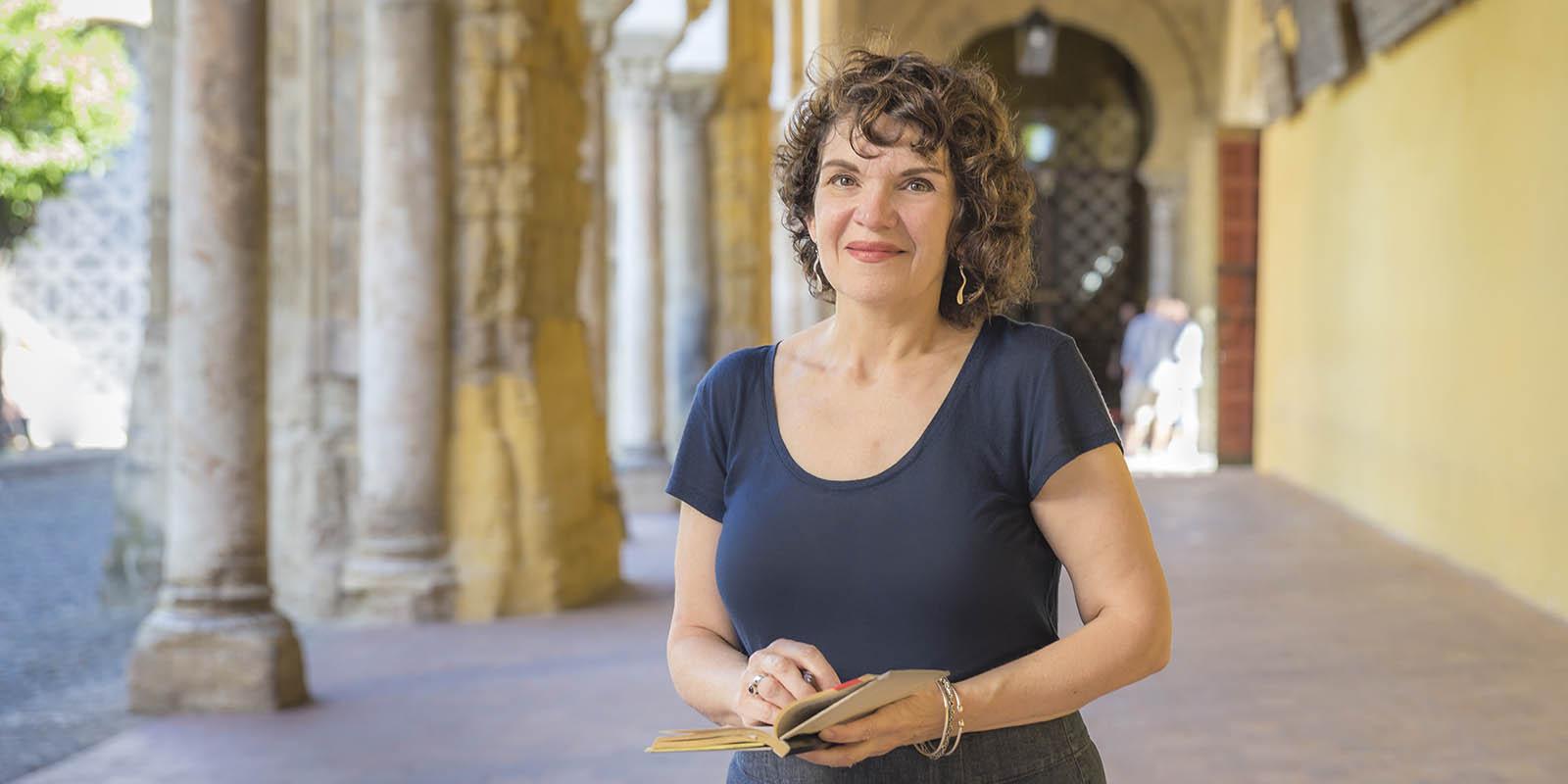Associate Professor Michele Lamprakos has been appointed Paul Mellon Visiting Senior Fellow by the Center for Advanced Study in the Visual Arts (CASVA) at the National Gallery of Art in Washington D.C. CASVA fellowships are among the top fellowships in the disciplines of art and architectural history. The appointment will allow her to advance her second book, Memento Mauri: The Afterlife of the Great Mosque of Cordoba (forthcoming, University of Texas Press).
Lamprakos has a long-standing interest in palimpsests, historically layered buildings and sites—especially those that represent the overlay of different cultures, faiths and political regimes. “The Mosque-Cathedral of Cordoba is the ultimate palimpsest and it’s been calling to me for decades,” she says.
When Christian forces seized cities in Islamic Spain, they converted mosques for Christian worship; eventually they demolished them and replaced them with churches and cathedrals. Only the Great Mosque of Cordoba survived as a functioning cathedral, but in the 16th century, a choir and presbytery were built amid the mosque’s famous forest of columns. The strange hybrid building has been an enduring mystery and the center of controversy up to the present day.
“Cordobans still call it ‘la Mezquita’—the mosque—even though it’s been the city’s cathedral for nearly eight centuries,” says Lamprakos. “But the layers are so much more complex than one could ever imagine.”
Memento Mauri looks at cycles of change over the centuries–patronage, demolition, erasure, restoration–as a barometer of changing attitudes toward the Islamic past, and the meaning of that past for Spanish culture and society. Placing it within the country’s shifting political, social and religious landscape, she hopes to bring new understanding to the building’s history while cementing its narrative. “The story is an important part of Spain’s heritage,” she says, “but it’s also relevant to sites across the world that have been shaped and contested by different faiths.”
As a CASVA fellow, Lamprakos will join an interdisciplinary community of scholars dedicated to the study of history, theory and criticism of the visual arts, including architecture, urbanism, artifacts and form. Dedicated research time is complemented with access to the gallery’s extensive collections and library, as well as other specialized libraries in Washington, including the Library of Congress.
Lamprakos is a trained architect and historian who specializes in the architecture, heritage and urbanism of the Arab-Islamic world. Her first book, Building a World Heritage City: Sanaa Yemen, received an Honorable Mention by the Society of Architectural Historians’ Spiro Kostof Award in 2018. She is a prolific writer and lecturer and served as technical reviewer for the Aga Khan Award and as desk reviewer for UNESCO. She has taught architectural history and theory at the University of Maryland since 2012, and also teaches studios and advises design theses on historically layered sites.
For a glimpse of the themes of Lamprakos’ book see her preliminary essay in The Destruction of Cultural Heritage in the Middle East: from Napoleon to ISIS in Aggregate Architectural Collaborative vol. 3, edited by Pamela Karimi and Nasser Rabbat.

